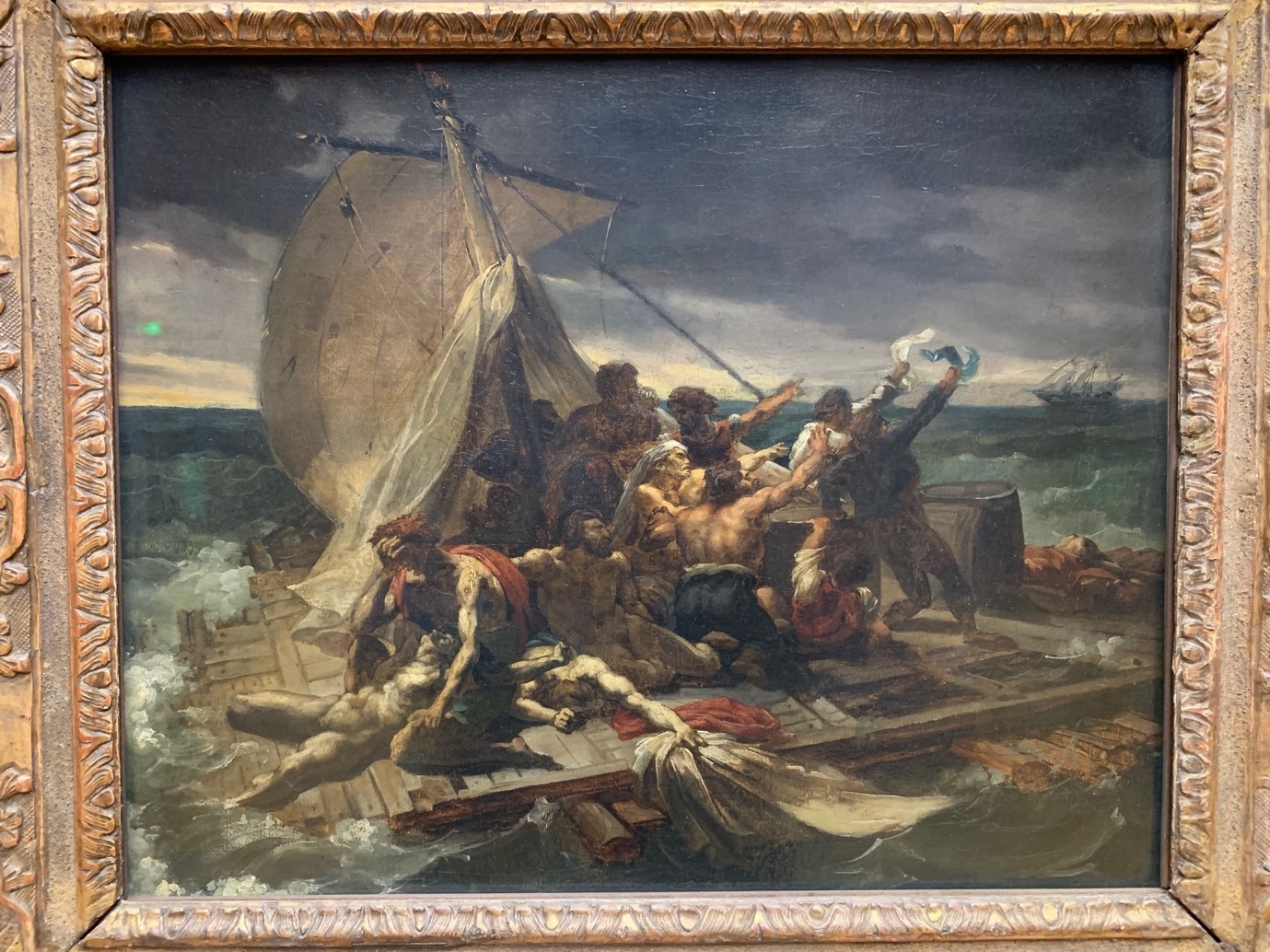

Sketches and copies
My Louvre by Antoine Compagnon

Sketches and copies
It goes without saying that, like everyone else, I admire the great canvases hung against crimson walls in the Mollien and Denon rooms: Géricault’s The Raft of the Medusa; Delacroix’s The Death of Sardanapalus, which has just made its majestic return to the picture rails; and Prud’hon’s Justice and Divine Vengeance Pursuing Crime (Denon, rooms 700 and 702). But I also like the small-format pictures—sketches or copies—relegated to the second floor of the southern side of the Cour Carrée. One finds here two sketches for The Raft of the Medusa (Sully, room 941, RF 2229; room 950, RF 1667), a sketch for The Death of Sardanapalus (Sully, room 942, RF 2488), and Géricault’s (or, more likely, an unknown painter’s) copy of Justice and Divine Vengeance Pursuing Crime (Sully, room 936). Don’t miss them! How can I explain my taste for sketches? I fear it is a sign of weakness or faint-heartedness, a reaction against the reverent astonishment, the intimidating admiration, that I experience before the large canvases on the first floor. At my age, despite having frequented them for decades, I still feel impotent before Delacroix’s The Entry of the Crusaders into Constantinople or David’s Intervention of the Sabine Women, not to speak of The Coronation of Napoleon. In the same way, I prefer Beethoven’s quartets to his symphonies, Baudelaire’s Fleurs du Mal to Hugo’s La Légende des Siècles. I breathe more easily in their presence.